Well, now. Let me just say, right here at the beginning, that this dish is just off-the-charts delicious. It may not look like that much in the photo – I mean, it is a casserole. But oh, the flavors in this! And although it’s called an easy cassoulet, it’s not something you can throw together in 30 minutes. Nope. Probably takes about 1 1/2 hours or so to do it all.
In case you aren’t familiar with cassoulet (pronounced cass-eau-lay in French), let me just enlighten you. It means a slow-cooked bean stew or casserole. Typically a cassoulet contains some pork, some sausage and some duck. This version contains pork (chops), smoked sausage (kielbasa chunks) and some chicken thighs. And canned beans, to make it as easy as possible. It has some other things, minor stars, to be sure, to add character and flavor or texture. I think I could eat this dish at least once a week – and likely in Southern France, many families do, with some leftovers from the last dish incorporated into the new dish, to keep the flavors moving onward.
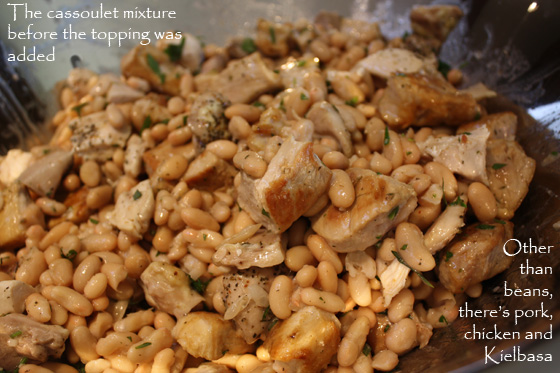 The below photo shows the cassoulet with the topping – the croutons that are crumbled on top just before serving, along with the fresh herbs – Italian parsley and thyme. The meats (the pork chops and chicken and the coins of kielbasa) are scooped into a middle layer in between a bean layer on the bottom, and another bean layer on top. I topped mine with a thin layer of grated Parmesan cheese. Once it bakes until it’s bubbling hot, you add a thin layer of croutons and sprinkle on some more fresh herbs and serve immediately. To absolute raves.
The below photo shows the cassoulet with the topping – the croutons that are crumbled on top just before serving, along with the fresh herbs – Italian parsley and thyme. The meats (the pork chops and chicken and the coins of kielbasa) are scooped into a middle layer in between a bean layer on the bottom, and another bean layer on top. I topped mine with a thin layer of grated Parmesan cheese. Once it bakes until it’s bubbling hot, you add a thin layer of croutons and sprinkle on some more fresh herbs and serve immediately. To absolute raves.
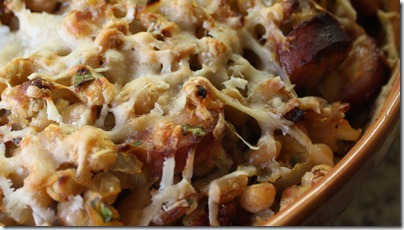 This recipe, with a couple of modifications, came from Cathy Thomas, the food editor of our local newspaper, in a December, 2010 article. The original of this easy version started with a recipe from Bon Appetit. Cathy Thomas tweaked it some. She says this is one of her favorite company meals. You can make a double batch if you’re feeding a crowd. Now, I did tweak it a little bit too, from Cathy’s version, as I mentioned above – I didn’t have smoked pork chops. I had regular pork chops – so I used those and then added in two slices of smoked, thick sliced bacon. The other change I made is probably very non-traditional – I sprinkled the top of the casserole with some freshly grated Parmesan cheese. I wanted that umami taste. The croutons are a last minute garnish – I toasted the fresh bread cubes (from a regular baguette) tossed in a little bit of oil for about 15 minutes in the oven, then I sealed them in a quart-sized ziploc bag and used a pounder to break the cubes into smaller pieces. Those, then, were sprinkled on the top just before serving, along with the fresh herbs that gave the dish some color. The croutons give a delicious crunch to every bite, and they soak up a little liquid from the casserole too. Definitely don’t eliminate the croutons – they help make the dish, in my opinion.
This recipe, with a couple of modifications, came from Cathy Thomas, the food editor of our local newspaper, in a December, 2010 article. The original of this easy version started with a recipe from Bon Appetit. Cathy Thomas tweaked it some. She says this is one of her favorite company meals. You can make a double batch if you’re feeding a crowd. Now, I did tweak it a little bit too, from Cathy’s version, as I mentioned above – I didn’t have smoked pork chops. I had regular pork chops – so I used those and then added in two slices of smoked, thick sliced bacon. The other change I made is probably very non-traditional – I sprinkled the top of the casserole with some freshly grated Parmesan cheese. I wanted that umami taste. The croutons are a last minute garnish – I toasted the fresh bread cubes (from a regular baguette) tossed in a little bit of oil for about 15 minutes in the oven, then I sealed them in a quart-sized ziploc bag and used a pounder to break the cubes into smaller pieces. Those, then, were sprinkled on the top just before serving, along with the fresh herbs that gave the dish some color. The croutons give a delicious crunch to every bite, and they soak up a little liquid from the casserole too. Definitely don’t eliminate the croutons – they help make the dish, in my opinion.
Easy Cassoulet
Recipe By: Adapted from Cathy Thomas, Orange County Register, 12/2010 (she started with a Bon Appetit recipe)
Serving Size: 8
NOTES: Seasoning blend: use some kind of spicy, non-salt based seasoning for the chicken. Make your own if you don’t have one on your spice shelf. Croutons: cut up about 1 1/2 cups of fresh baguette, drizzle lightly with oil and bake at 425 for 4-7 minutes until bread is golden. Cool. Place in a plastic bag and use mallet or pounder to break apart the croutons into smaller pieces. You should have about 1 cup of crumbs and chunks.
1 1/2 pounds boneless skinless chicken thighs — cut into 2″ cubes
Seasoning blend to taste (see notes)
3 tablespoons olive oil — divided use
3 ounces smoked bacon — diced
1 pound pork chops — smoked or regular, about 1 pound, cut into chunks
1 large onion — chopped (or 2 smaller onions)
2 large garlic cloves — minced
3/4 cup chicken broth — plus 1/4 cup more if needed
1 1/2 tablespoons tomato paste
1 whole bay leaf
1/4 teaspoon ground black pepper
30 ounces canned great northern beans — 15-ounce cans, drained
30 ounces canned cannelini beans — 15-ounce cans, drained
3/4 pound Polish sausage — (turkey or pork), cut into 1/2-inch diagonal slices
1 cup Parmesan cheese — grated
Herb mixture: 6 tablespoons minced fresh parsley combined with 1 1/2 tablespoons minced fresh thyme — divided use
1 cup croutons garnish (see notes)
1. Fifteen minutes before baking, preheat oven to 400° degrees. Generously season chicken thighs with seasoning blend on both sides. Place in single layer on small baking dish and bake until thoroughly cooked, about 25 to 30 minutes in preheated oven.
2. Meanwhile, place 2 tablespoons olive oil in a 5-quart, deep, ovenproof casserole. Add bacon and pork chops. Bake uncovered in preheated oven for 20 minutes, turning chops once and stirring pancetta.
3. In a large skillet, heat remaining 1 tablespoon oil. Add onions and garlic. Cook on medium-high until onion is transparent, stirring occasionally. Stir in broth, tomato paste, bay leaf and pepper. Cover and simmer for 2 minutes.
4. Stir in beans and 4 tablespoons fresh herb mixture. Simmer for 2 minutes.
5. Remove chops and bacon from casserole, draining any excess oil. Do not wash casserole. Pour half the bean mixture into casserole. Add bacon, chops, chicken thighs and sausage. Top with remaining bean mixture. If mixture seems dry, add 1/4 cup of chicken broth. Top with Parmesan cheese.
6. Bake, uncovered, for 20-25 minutes (or 35-40 minutes if it has been refrigerated). Discard bay leaf. Taste and add salt if needed. Garnish with croutons and remaining fresh herb mixture.
Per Serving: 612 Calories; 34g Fat (50.6% calories from fat); 41g Protein; 34g Carbohydrate; 9g Dietary Fiber; 115mg Cholesterol; 1330mg Sodium.
A year ago: Shchi (a Russian pork and cabbage soup)
Two years ago: A silly post – 25 random things about me you never knew, and probably don’t care about anyway!
Three years ago: Shells with Pancetta and Spinach





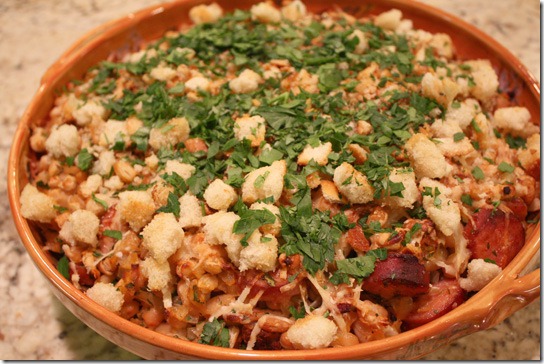

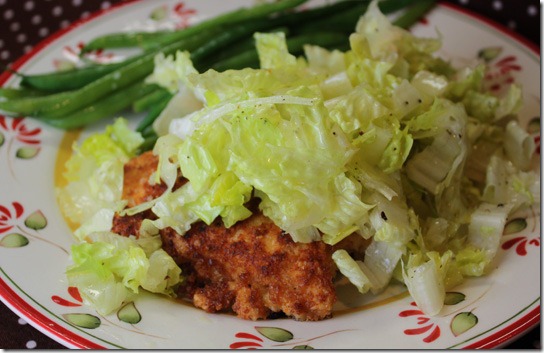
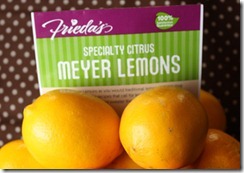
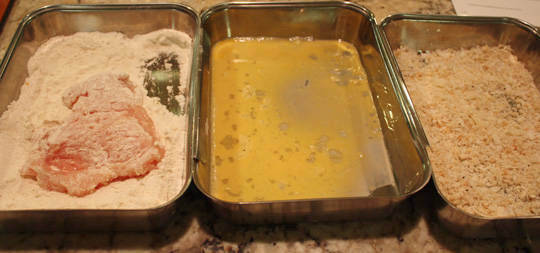
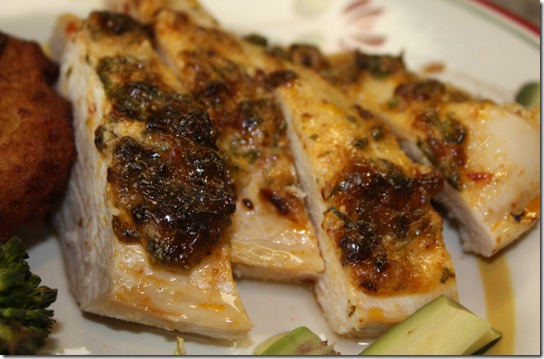
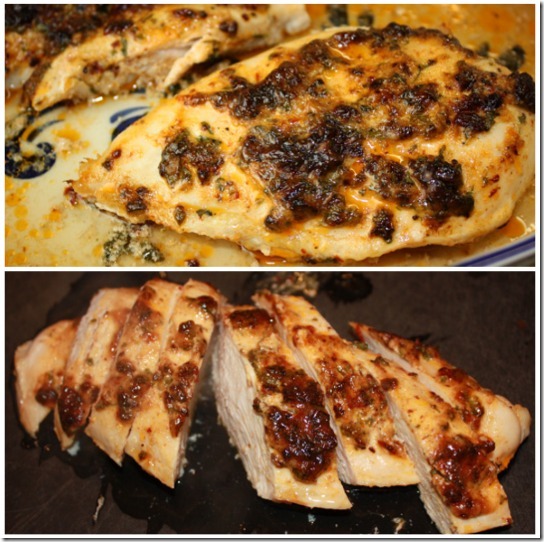
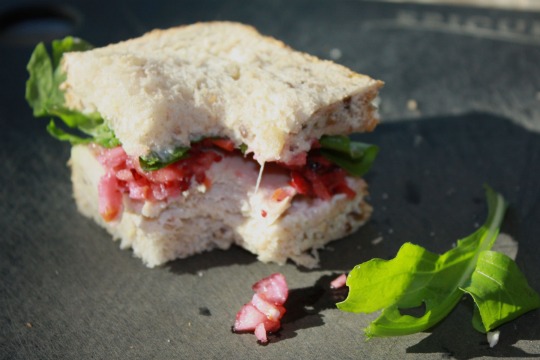
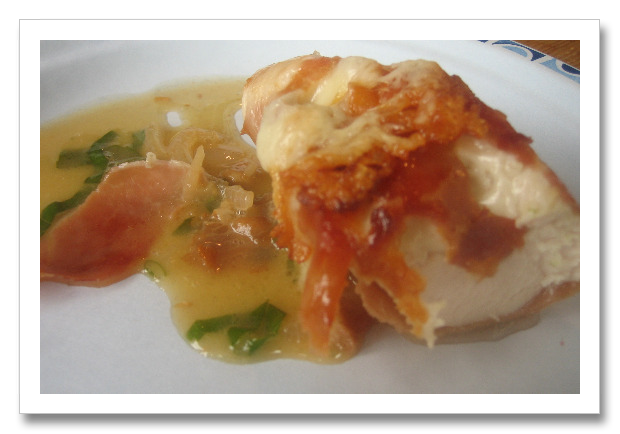
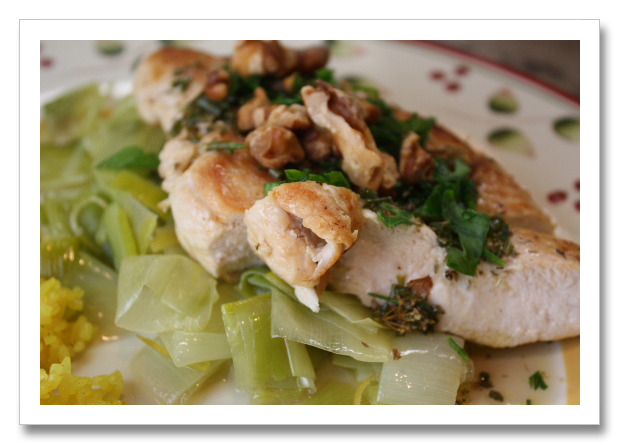
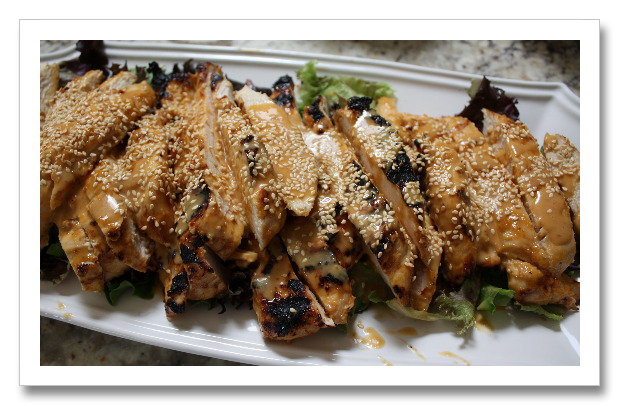
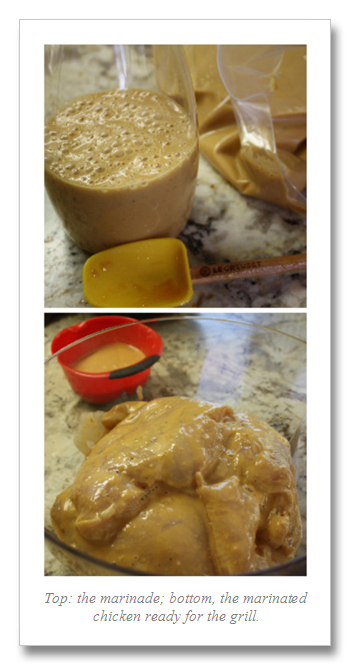
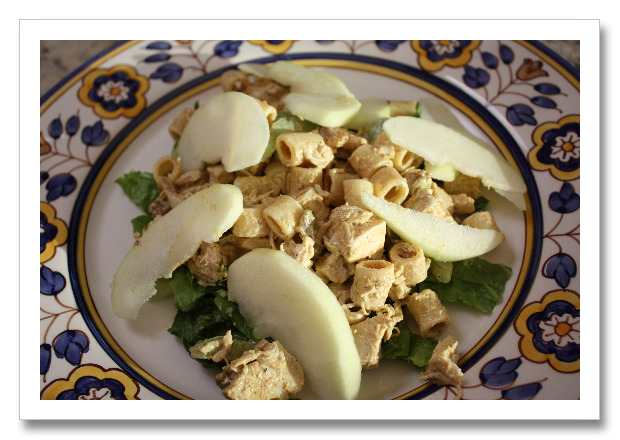
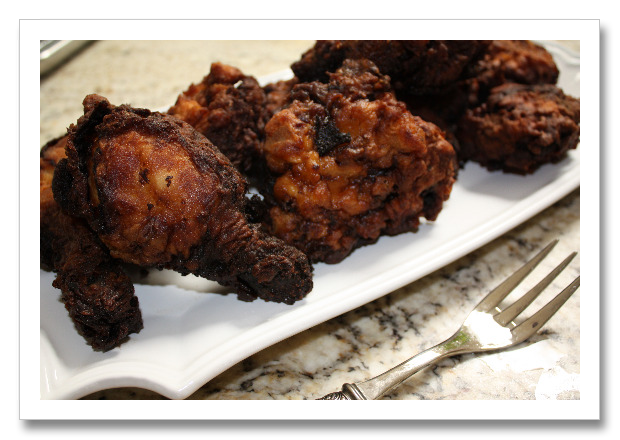
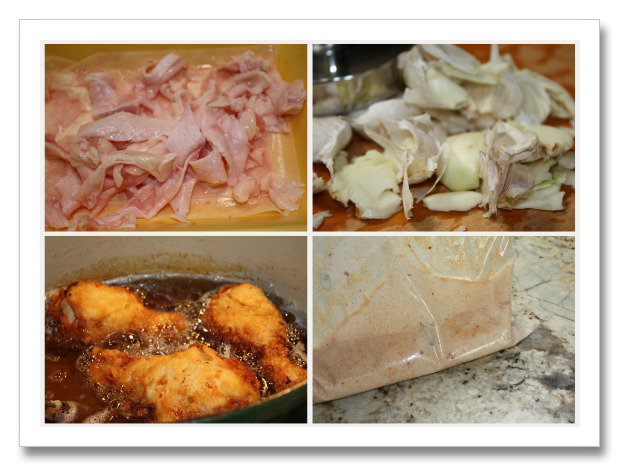
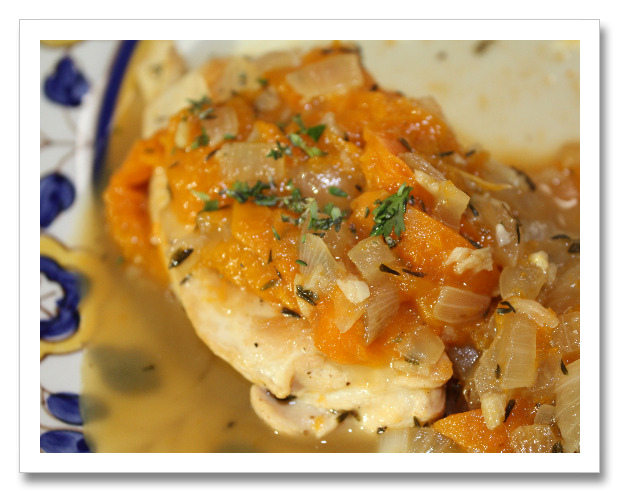
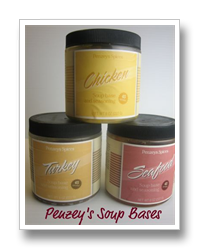
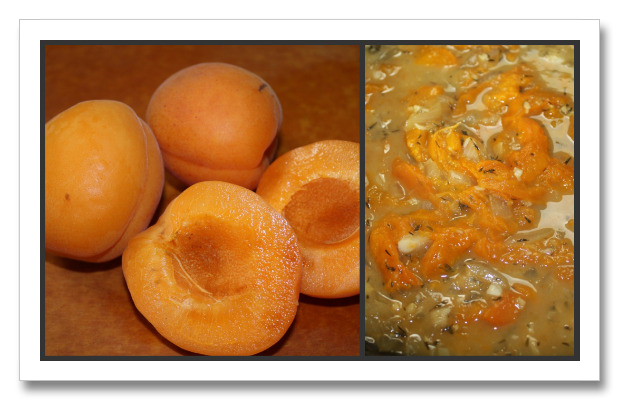
Leave a Comment!